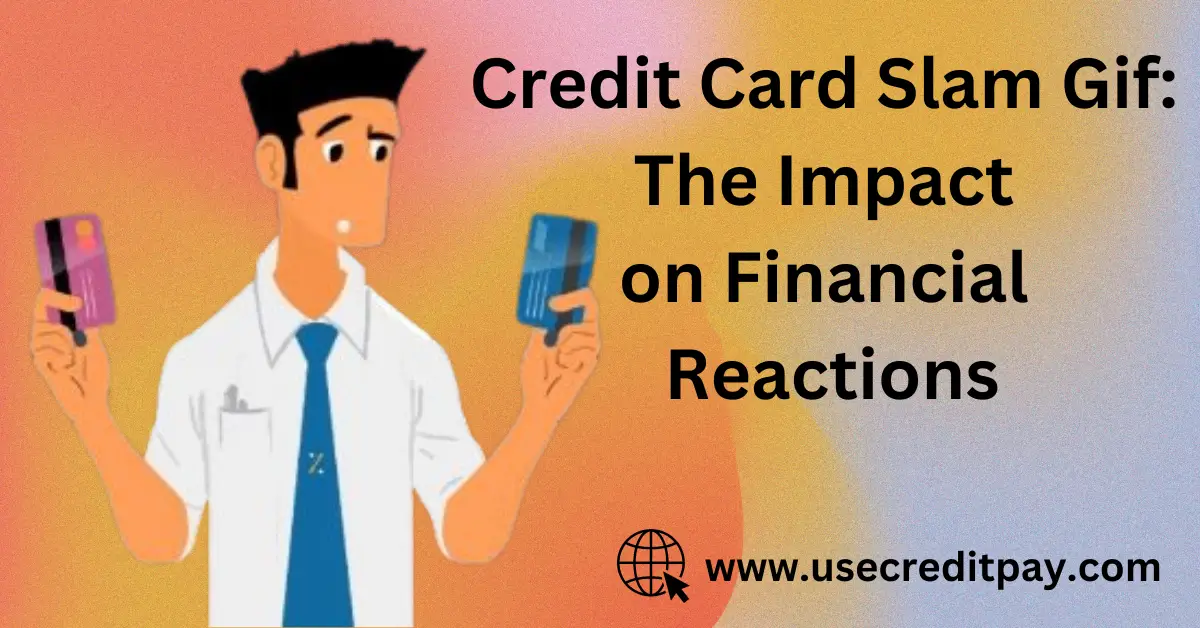Credit card images with 840×840 dimensions provide high-resolution visuals for detailed viewing. These images can showcase credit card designs and features.
Online businesses, finance bloggers, and financial institutions often require quality images of credit cards to enhance the visual appeal and informational value of their websites or marketing materials. High-resolution images, such as those measuring 840 by 840 pixels, give visitors a closer look at the texture, colors, and intricate details of the card designs, which can be crucial for promotional purposes or online representation.
Providing clear, accurate visuals is essential for users to familiarize themselves with the various credit card offerings and design distinctions. These images align with customer expectations on visual clarity and can be pivotal in decision-making processes, whether it’s about selecting a card or understanding its benefits.
The Power Of Visual Appeal In Credit Card Marketing
Credit cards are not just payment tools.
They are fashion statements.
They speak volumes about a brand.
A captivating 840×840 credit card image can make a big difference.
It is about attracting customers and making a lasting impression.
Visual Branding: Creating Identity With Images
Visual branding forms an instant connection with your audience.
- A bold logo
- Eye-catching color schemes
- Innovative designs
Strong visuals build brand recognition.
They set credit cards apart from competitors.
An 840×840 image showcases these elements perfectly.
First Impressions: The Impact Of High-quality Visuals
A sharp, detailed image makes a first impression.
It influences a customer’s choice.
Is it professional? Trendy?
It depends on the image quality.
High-definition 840×840 images suggest professionalism and quality.
Let the visuals tell your card’s story.
Stand out in wallets and adverts alike.
Make your credit card the one to want.
Crafting The Perfect 840×840 Credit Card Image
Crafting the perfect 840×840 credit card image is about detail and balance. This ideal size ensures sharpness across digital platforms. Brands can showcase their cards impressively in this square format. Let’s dig into the components of a striking credit card image.
Image Composition: Balancing Elements
Great image composition is key. The primary goal is to make the credit card the star. Use negative space creatively to draw eyes towards the card. Ensure that the brand logo, card number, and other details are legible. Place them thoughtfully to achieve visual harmony. A balanced image composition can include:
- Clear focal point: The credit card takes center stage.
- Rule of thirds: Use this classic photography principle to align elements.
- Minimal background: Keep it simple to avoid distractions.
Color Psychology: Influencing Perceptions
Color evokes emotions. It can influence how customers feel about a credit card. Use color psychology to your advantage. Consider these points:
| Color | Emotion |
|---|---|
| Red | Excitement, Urgency |
| Blue | Trust, Security |
| Green | Growth, Wealth |
Match colors with the card’s benefits. For travel cards, use blues and greens to evoke freedom and adventure. For premium cards, dark colors suggest luxury and exclusivity.
Optimizing Images For Different Platforms
Managing visuals like 840X840 credit card images requires precision—especially when optimizing for different platforms. Each platform has specific needs to ensure a seamless experience. Here’s how to adjust these images to keep users engaged, no matter where they see them.
Web Vs. Mobile: Adjusting For User Experience
In the digital world, user experience dictates the need for responsive design. Adjust your images to fit both large and small screens effectively.
- On desktops, larger images work well due to bigger display areas.
- Mobile devices, on the other hand, require smaller, optimized images to speed up load times.
Use tools like CSS media queries to serve different image sizes based on the user’s device. This ensures that your credit card images look crisp and clear, whether on a 27-inch monitor or a 5-inch smartphone screen.
Social Media: Tailoring Images For Engagement
Social media platforms are visual-centric. Here, your images serve as magnets for attention and engagement.
| Platform | Optimal Size | Tips |
|---|---|---|
| 1200x630px | Use high-quality images with minimal text. | |
| 1080x1080px | Focus on strong visuals with vibrant colors. | |
| 1500x500px | Ensure imagery is clear even when cropped for previews. |
Understanding the nuances of image layouts for each platform helps you stand out. Remember, your credit card images should evoke curiosity and drive user action.
Staying Ahead Of The Curve With Trends
Being at the forefront of marketing trends is essential for finance companies. As the way we think about money evolves, so does the imagery we associate with it. High-quality 840X840 credit card images have become a staple in promoting financial products online. They must not only be eye-catching but also aligned with the latest trends. This empowers brands to engage effectively with their audience.
Latest Design Trends In Finance Marketing
- Minimalism: Clean lines, simple shapes, and uncluttered visuals.
- Vibrant Colors: Bold hues that stand out on digital platforms.
- Authenticity: Images that represent real-life scenarios and diversity.
- Animation: Short, engaging motion graphics to capture attention.
The push towards sleek, modern design is evident. Today’s credit card promotions often feature crisp, minimalist layouts that focus on the essentials. Brands are choosing vibrant colors to make a strong impression in a crowded digital space. Authentic representations foster trust, while animations offer an interactive experience.
Innovative Uses Of Imagery In Credit Card Promotions
| Tactic | Description | Benefit |
|---|---|---|
| Personalization | Custom graphics tailored to user preferences. | Creates a unique user experience. |
| Integration | Embedding cards in daily life settings. | Presents relatable and practical use cases. |
| Storytelling | Connecting visuals to compelling narratives. | Builds an emotional connect with the audience. |
Innovating with visuals goes beyond just aesthetic appeal. Personalization in imagery makes consumers feel unique. When credit card images show the product amidst everyday life scenarios, it gives a sense of practicality. Stories captivate and engage consumers on a deeper level. It’s not just about the card; it’s the lifestyle that it enables.
Mastering The Technical Aspects
Mastering the technical aspects of 840×840 credit card images ensures they work effectively for your users. Key features include resolution, file size, image formats, and compatibility. Grasping these facets can improve both user experience and website performance.
Resolution And File Size: Balancing Quality And Speed
Optimal resolution and file size go hand in hand to provide crisp images. They also ensure fast page loads. Let’s dive into how to strike the right balance:
- Choose the right resolution: 840×840 pixels present high detail for credit card images.
- Compress wisely: Reduce file size without losing quality. Tools like Adobe Photoshop or online compressors work well for this task.
| Image Quality | Recommended Resolution | File Size Range |
|---|---|---|
| High | 840×840 pixels | 50-100KB |
| Medium | 840×840 pixels | 30-50KB |
| Low | 840×840 pixels | 10-30KB |
Sites load faster with smaller image files. Still, maintaining visual quality is key. Aim for a balance to get the best of both worlds.
Formats And Compatibility: Ensuring Universal Access
To make images work on all devices and browsers, understand which formats to use:
- JPEG: Good for detailed images, such as credit card pictures.
- PNG: Offers transparency and high quality with a larger file size.
- WebP: A modern format providing both excellent quality and compression.
Always choose formats broadly supported. WebP is efficient but check user’s browser compatibility. JPEGs work almost everywhere but may lack some newer features.
Use the
This HTML code provides a fallback. If the WebP format is not supported, the JPEG image will display. Everyone gets the best experience possible with no extra work for them.
Legal Considerations For Credit Card Imagery
When showcasing 840×840 credit card images, it’s not just about the visual appeal. You must heed the legal considerations for credit card imagery. Here, we delve into two critical aspects: copyright and trademark laws, as well as privacy and compliance issues in financial advertising. Striking the right balance is key to avoiding legal pitfalls.
Copyright And Trademark Laws In Marketing Material
Familiarize yourself with the rules before using credit card images in marketing materials. There are do’s and don’ts to follow.
- Do ensure that images are royalty-free or licensed for use.
- Do not infringe upon trademarks.
- Always credit creators if required.
| Checklist for Use | Legal Requirement |
|---|---|
| Image Source | Royalty-free or Purchased License |
| Brand Identification | No Trademark Infringement |
| Credits | Proper Attribution |
Privacy And Compliance In Financial Advertising
Adhering to financial advertising regulations is crucial. Personal information and accurate representation matter.
- Protect personal data — no real credit card numbers.
- Ensure representations of offers and services are truthful.
- Follow guidelines laid out by financial authorities.
Advertisers should familiarize themselves with the rules from:
Federal Trade Commission (FTC)National Advertising Division (NAD)Consumer Financial Protection Bureau (CFPB)
Analyzing The Success Of Your Imagery
Analyzing the success of your imagery is crucial in the dynamic world of digital marketing. With visuals at the forefront, capturing the essence of your brand through 840×840 Credit Card Images can be a game-changer. These square images render beautifully across various devices, ensuring a consistent branding experience. To measure the impact of these images, we delve into the world of Key Performance Indicators and A/B testing.
Key Performance Indicators For Marketing Campaigns
Key Performance Indicators (KPIs) serve as a compass for marketers. They reveal how well your imagery resonates with your audience. For 840×840 Credit Card Images, take note of these vital KPIs:
- Click-Through Rate (CTR): This shows the percentage of viewers who click on your image link.
- Conversion Rate: Tracks how many image viewers complete a desired action.
- Engagement Rate: Reflects interactions like shares, comments, and likes.
- Bounce Rate: Measures how many people leave quickly after viewing the image.
A/b Testing: What Works Best For Your Audience?
A/B testing offers insights into audience preferences. By comparing two versions of your 840×840 Credit Card Images, you identify what triggers a better response. Some areas to test include:
| Version A | Version B |
|---|---|
| Different image colors | Varied text overlays |
| Alternate branding elements | Distinct call-to-actions |
Monitoring the performance by analyzing KPIs for each version can reveal the winning formula for your credit card images. This data-driven approach ensures you create imagery that captivates and converts.
Leveraging 840×840 Images In Omnichannel Marketing
In today’s fast-paced digital landscape, versatility is key. That’s why 840×840 credit card images are becoming a staple in omnichannel marketing strategies. Perfect in size and quality, these images offer a crisp, clear visual representation of your brand’s credit cards across various platforms. Let’s delve into how we can use these images to create a consistent and customized brand message that resonates with your audience.
Seamless Branding Across Multiple Channels
- Consistency is crucial: Maintain your brand’s look on all platforms.
- High resolution: Ensure clarity at all display sizes.
- Memorable: Make your credit card design recognizable.
Customizing Visuals For Targeted Marketing Strategies
Meet customer needs: Tailor images to different audience segments. Apply insights to design elements that appeal to specific groups. Engage users with visuals that reflect their interests.
Test and adapt: Analyze customer feedback. Adjust visuals for more effective campaigns. Keep your marketing fresh and relevant.
Frequently Asked Questions On 840×840 Credit Card Images
What Are 840×840 Credit Card Images?
840X840 credit card images refer to digital graphics with a resolution of 840 by 840 pixels. These square images are often used for online display, ensuring a clear and detailed view of credit card designs, especially for websites and mobile apps requiring high-resolution visuals for enhanced user experience.
Is 840×840 Size Ideal For Web Use?
Yes, 840X840 is an ideal size for web use, balancing clarity and speed. The resolution is high enough for detail without slowing down page load times, which is critical for maintaining good website performance and user satisfaction.
How To Create 840×840 Credit Card Images?
Creating 840X840 credit card images involves using graphic software. Start by setting your canvas to 840×840 pixels, design your image, and save it in a web-optimized format like PNG or JPEG. Ensure the design is legible and visually appealing at this size.
Are High-res Images Better For Online Payments?
High-resolution images are not necessarily required for processing online payments but do provide a better visual experience. Clear imagery builds trust and professionalism, which is crucial for users when entering sensitive credit card information online.
Wrapping up, high-quality 840×840 images for credit cards boost visual appeal and user experience on your platforms. By optimizing with these specific dimensions, you enhance branding consistency and online presence. Remember, clarity and resolution are key to customer trust, so invest time in getting your credit card imagery right. Start refining your images today for a sharper, more professional look tomorrow.




